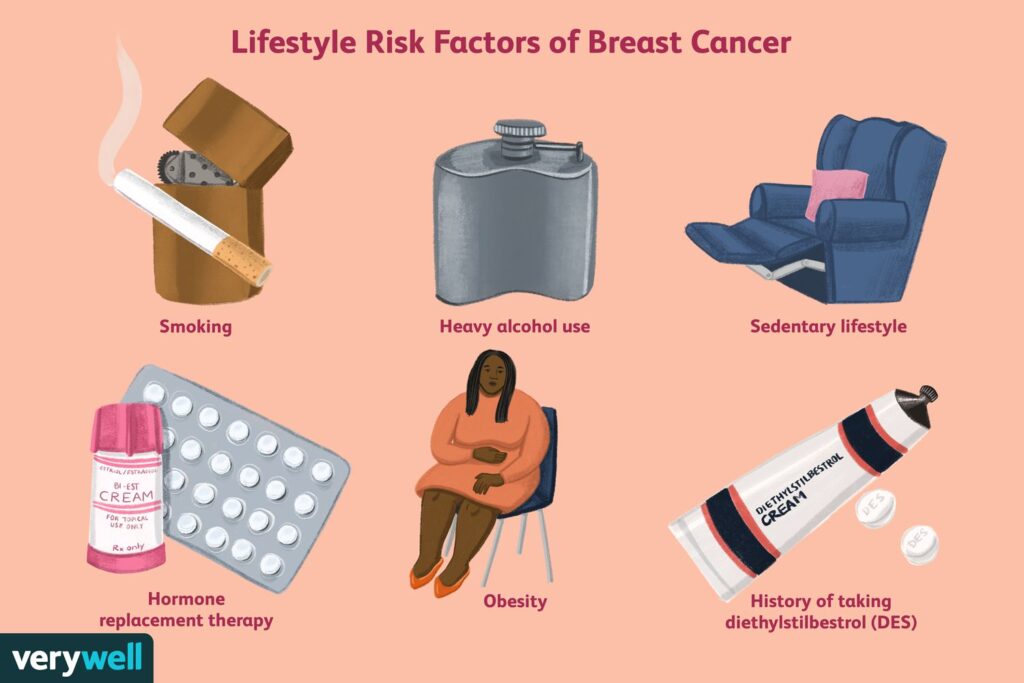- Research
- 2022-2026 Research Strategy
- Open Clinical Trials
- Closed Clinical Trials
- What is a Clinical Trial?
- Why Participate in a Clinical Trial
- Remote Telehealth Pre-Screening Process
- Research Achievements
- Publications
- Research Development and Funding
- Participating Institutions
- International Collaboration
- BCT Trials & Projects Summary
- Translational Research
- Clinical Fellowship Program
- International Fellowship Support
- Annual Scientific Meeting
- Travel Grants and Awards
- About
- Our Impact
- Fundraise
- Donate
- Researcher Login
- Cart
Breast cancer is a complex disease with various contributing factors. Understanding these factors is crucial for prevention, early detection, and treatment. In this article, we will explore the known causes of breast cancer, including genetic, environmental, and lifestyle factors. We will also discuss the differences in causes between females and males, explain why early detection is key, and we provide answers to frequently asked questions on the causes of breast cancer.
What is the cause of breast cancer?
Breast cancer is due to the abnormal growth of abnormal cells in the breast tissue. These abnormal cells have the ability to invade into, and destroy, surrounding tissues; as well as spread to other parts of the body. While the precise cause of breast cancer is not fully understood, several known factors contribute to its development. According to the Australian Cancer Council, these factors include:
- Age: Risk increases with age, particularly after 50.
- Family History: A significant number of breast cancer cases occur in individuals with a family history of the disease.
- Genetics: Specific gene mutations are linked to breast cancer.
- Hormone Exposure: Prolonged exposure to estrogen and progesterone, such as through early menstruation, late menopause, or hormone replacement therapy, can increase risk.
- Previous Breast Conditions: Having a history of benign breast conditions or previous breast cancer can elevate risk.

Genetic Factors
Genetic factors play a crucial role in the development of breast cancer. Mutations in certain genes are well-documented risk factors. The most well-known are:
- BRCA1 and BRCA2: Mutations in these genes significantly increase the risk of breast cancer. Individuals with BRCA1 or BRCA2 mutations have a higher likelihood of developing breast cancer at a younger age. These mutations can be inherited from either parent and account for about 5-10% of all breast cancer cases.
- Other Genetic Mutations: Research continues on other gene mutations, such as those in the TP53, PTEN, and CHEK2 genes, which also contribute to breast cancer risk.
In Australia, genetic testing and counselling are available for individuals with a strong family history of breast cancer, helping to assess risk and inform preventive measures.
Environmental and Lifestyle Factors
Environmental and lifestyle factors also contribute to breast cancer risk. According to the Australian Institute of Health and Welfare, these factors include:
- Alcohol Consumption: Regular and excessive alcohol intake is associated with an increased risk of breast cancer.
- Obesity: Being overweight or obese, particularly after menopause, increases the risk of breast cancer.
- Physical Activity: Lack of physical exercise is linked to a higher risk of developing breast cancer.
- Diet: A diet high in saturated fats and low in fruits and vegetables may contribute to an increased risk.
- Exposure to Radiation: Previous radiation therapy, especially to the head, neck, or chest area, can elevate breast cancer risk.
Differences in Causes of Breast Cancer Between Females and Males
While breast cancer predominantly affects females, it can also occur in males, albeit much less frequently. The causes of breast cancer in males share some similarities with those in females but also have distinct differences:
- Genetics: Male breast cancer is often associated with BRCA2 mutations, and sometimes BRCA1 mutations. Men with these mutations are at a higher risk.
- Hormone Levels: Elevated estrogen levels in males, possibly due to conditions like Klinefelter syndrome or liver disease, can increase the risk of breast cancer.
- Family History: A family history of breast cancer or other cancers can increase a male’s risk, though this is less common compared to females.
The overall risk factors for males are generally less well understood compared to females, partly due to the rarity of the condition in men, and the vast majority of men with breast cancer have no identifiable risk factors.
Why Early Detection is Key
Early detection of breast cancer significantly improves treatment outcomes and survival rates. Regular screening and awareness are crucial for early diagnosis. Key aspects include:
- Mammograms: Regular mammograms are the primary screening tool for detecting breast cancer, recommended for women aged 50-74 in Australia. For those with a higher risk, earlier and more frequent screenings may be advised.
- Clinical Breast Exams: Regular clinical breast exams by healthcare providers can help detect abnormalities not visible on mammograms.
- Self-Exams: While not a substitute for professional screening, self-breast exams can help individuals become familiar with their normal breast tissue and notice any changes.
- Genetic Testing: For individuals with a family history or genetic predisposition, genetic testing can provide crucial information for early detection and preventive measures.

